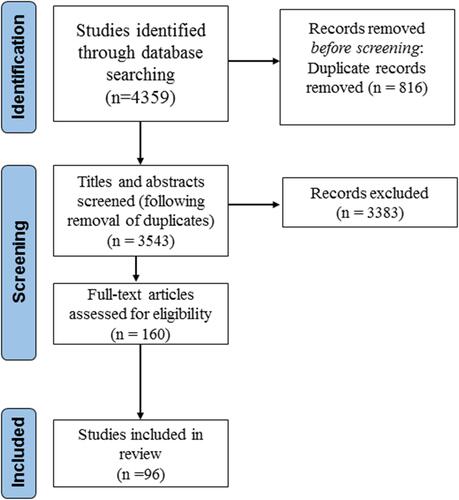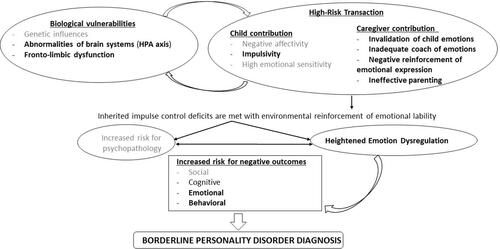Figures & data
Figure 1 Flowchart outlining the search and selection strategy. This figure describes the search and selection for strategy for the studies included in this narrative review. Initially, 4359 studies were identified through database searching; then, 3543 studies out of them were screened for titles and abstracts; and out of these 3543 studies, 160 full-text articles were assessed for eligibility. Finally, 96 studies were included in this narrative review.

Table 1 Description of the Studies Included in the Narrative Review
Figure 2 Adaptation of the biosocial developmental model of BPD. In this figure we present the pathways that could explain why sleep problems and subsequent BPD symptoms associate, using the biosocial developmental model by Crowell et al. In bold we have highlighted the processes that could have potential interaction with sleep problems and thus could explain the potential associations between sleep and BPD. These are HPA, prefrontal cortex, impulsivity, family psychopathology, disrupted attachment, childhood maltreatment, emotional dysregulation and internalizing/externalizing symptoms.

